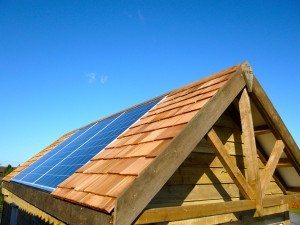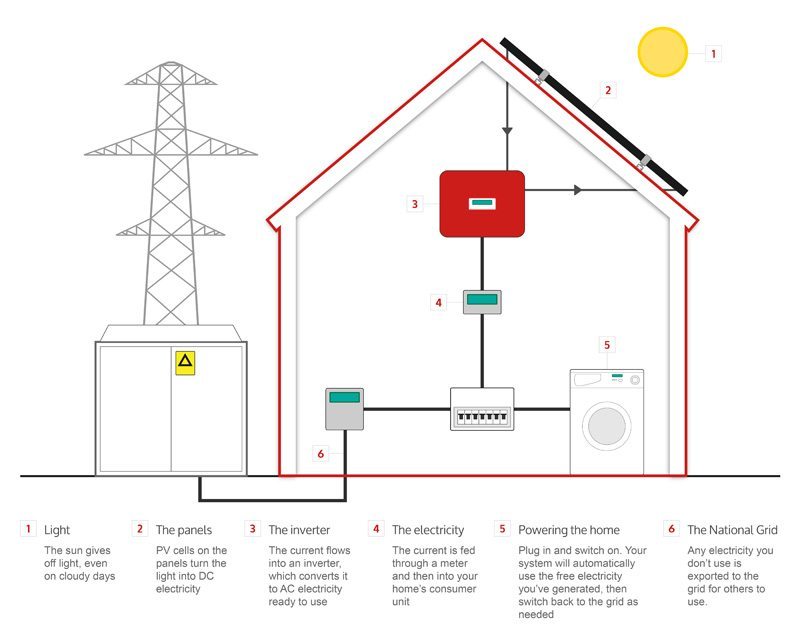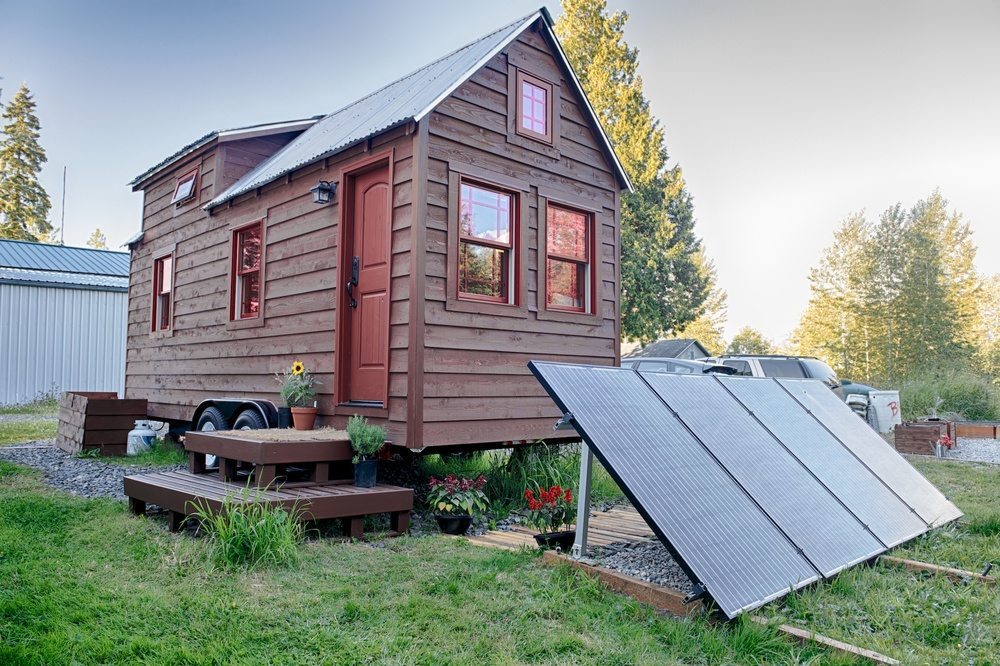How Solar Panels Work
How Solar Panels Work
Despite the popularity, a lot of us don’t understand how solar panels actually work. Here’s a quick “how solar panels work” guide to the steps that it takes to turn sunlight into electricity using solar panels:
It all starts when light hits your roof’s solar panels cells with photons (particles of sunlight). Each photovoltaic cell is basically a sandwich made up of two slices of semi-conducting material (usually silicon), which is the same stuff used in microelectronics.
To work, photovoltaic cells need to establish an electric field. Much like a magnetic field, which occurs due to opposite poles, an electric field occurs when opposite charges are separated. To get this field, manufacturers mix silicon with other materials which gives each slice of the sandwich a positive or negative electrical charge.
Specifically, they seed phosphorous into the top layer of silicon, which adds extra electrons, with a negative charge, to that layer. Meanwhile, the bottom layer gets a dose of boron, which results in fewer electrons, or a positive charge. This all adds up to an electric field at the junction between the silicon layers. Then, when a photon of sunlight knocks an electron free, the electric field will push that electron out of the silicon junction.
A couple of other components of the cell turn these electrons into usable power- metal conductive plates on the sides of the cell collect the electrons and transfer them to wires. At that point, the electrons can flow like any other source of electricity.
After the electric field has been established, the solar panel converts photons into electrons of direct current (“DC”) electricity. Naturally, the sunnier it is, the more energy is produced by the panels. Those produced electrons flow out of the panel and into an inverter and other electrical safety devices. The inverter converts that “DC” power into alternating current or “AC” power. AC power is the kind of electric juice that your television, computer, and toasters use when plugged into the wall outlet. A bi-directional meter keeps track of the all the power your solar system produces. Any solar energy that you don’t use immediately will go back into the grid through the meter.
Quick Summary:
- The sun gives off light, even on cloudy days.
- PV cells on the panels turn the light into DC electricity.
- The current flows into an inverter, which converts it to AC electricity ready to use.
- The current is fed through a meter and then into your home’s consumer unit.
- Plug in and switch on. Your system will automatically use the free electricity you’ve generated, then switch back to the grid as needed.
- Any electricity you don’t use is exported to the grid for others to use. Net metering is similar to having a virtual battery-back up system.*Some homes will store the energy created from solar panels with a battery, this is not as common as connecting to the grid.
Here’s an awesome example of a Tiny House powered by Solar.
sources:
http://www.livescience.com/41995-how-do-solar-panels-work.html
http://store.sundancesolar.com/how-much-energy-can-a-solar-panel-produce-in-a-day-1/
http://www.evoenergy.co.uk/services/how-solar-panels-work/




